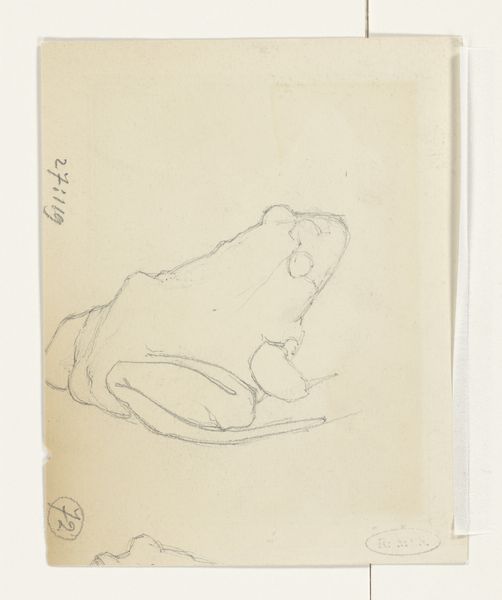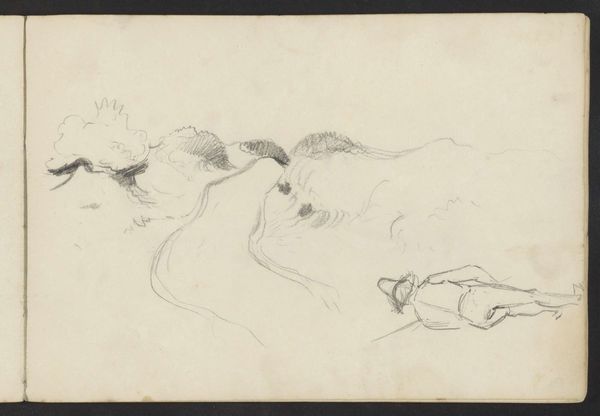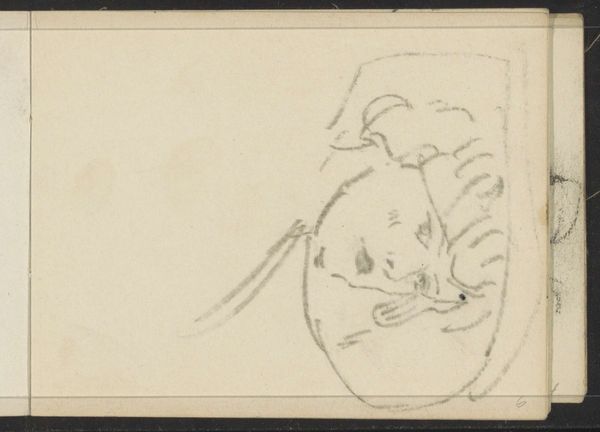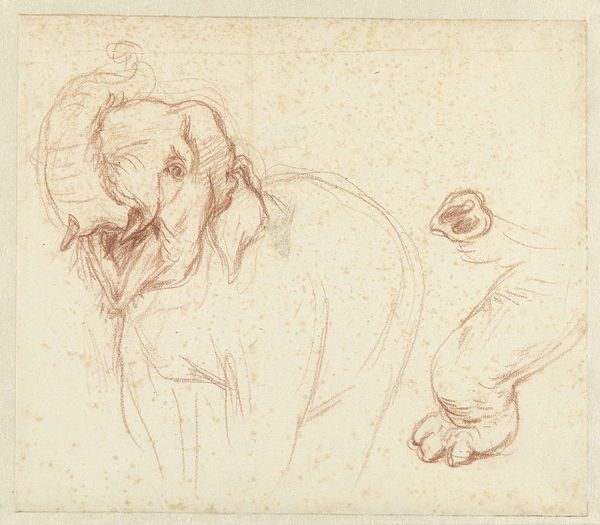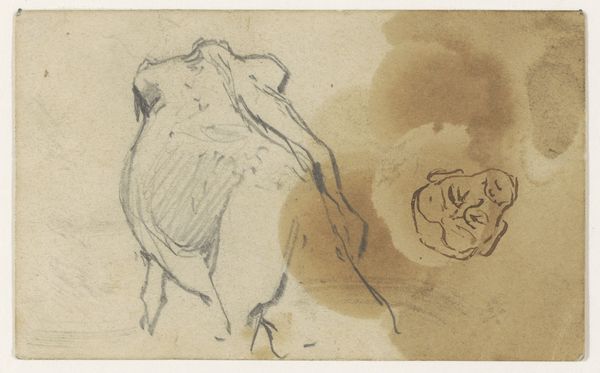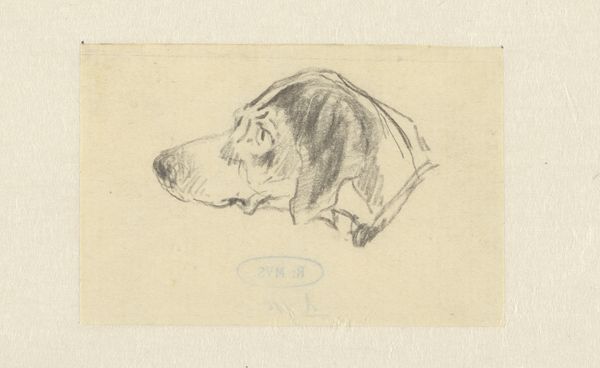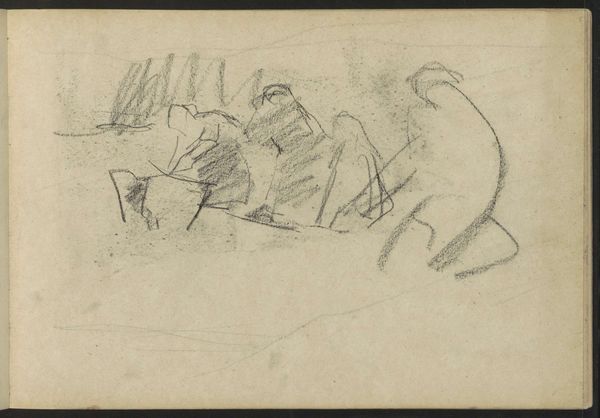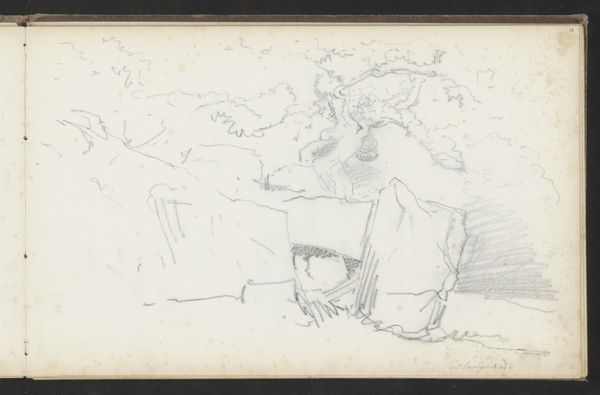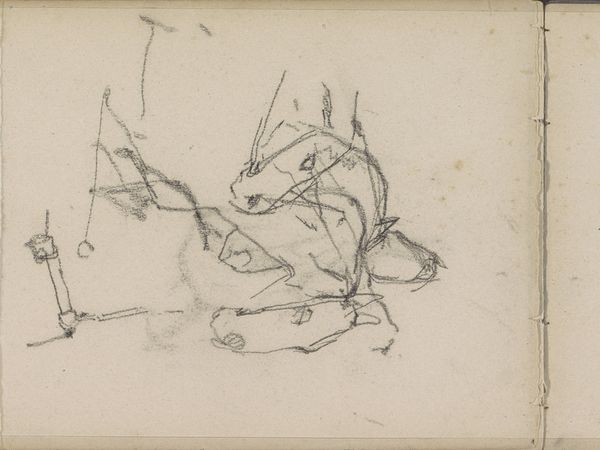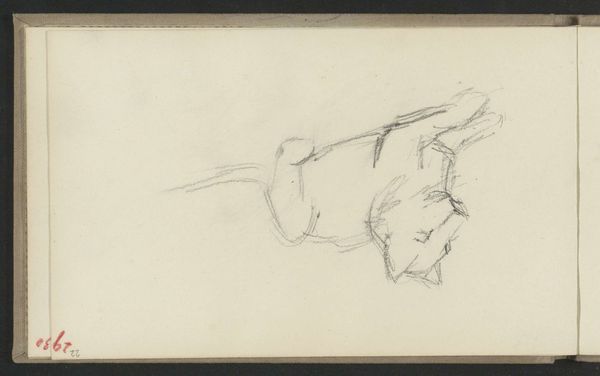
drawing, pencil, graphite
#
drawing
#
animal
#
dog
#
pencil
#
graphite
#
realism
Dimensions: height 99 mm, width 163 mm
Copyright: Rijks Museum: Open Domain
Curator: Here we have "Zittende hond, op de rug gezien" - or "Sitting Dog, Seen from the Back" created by George Hendrik Breitner, sometime between 1880 and 1882. It's a pencil and graphite drawing, now residing here at the Rijksmuseum. Editor: Immediately, I see a sketch capturing such a fleeting moment. There's an undeniable sense of introspection about the dog. It's so understated, almost melancholic, rendered with such simple, immediate lines. Curator: It's fascinating how Breitner often focused on everyday subjects, elevating the mundane. The dog, seen from the back, loses its individuality almost and becomes more of a symbolic representation of... well, maybe vulnerability or contemplation? What do you make of that back view? Editor: I think the view is crucial. We are denied a gaze, a connection with the animal, placing the viewer in a position of observer, almost like an unnoticed presence. Maybe a commentary on the place of animals, perhaps, within Dutch society at the time, relegated to the periphery of attention. Curator: Absolutely. It invites a contemplation on their sentience. The dog as a motif in art is usually associated with loyalty and companionship but viewed this way we are distanced. It's about Breitner subtly disrupting those symbolic traditions. But it also has an immediacy doesn't it, suggesting that this drawing might have been created quickly, in situ, when the dog was resting? It evokes a sense of empathy in that way. Editor: I agree. The sketch’s realness adds a layer of complexity. It reflects back the cultural value of artistic spontaneity emerging at that time, reflecting that period’s evolving ideas concerning aesthetic authenticity and, crucially, truthfulness. What do you feel this reveals? Curator: It reminds us that art, even in what seems like a minor sketch, can make powerful cultural statements, even if they are subtle or initially go unperceived. The choice to focus on a neglected corner, on a back view rather than a traditional portrait, can speak volumes. Editor: I agree. Breitner used a 'simple' drawing of a humble dog, but it embodies something of his moment – in terms of cultural trends, art practice and more widely its view of the place of animals in an industrialising society. There’s plenty to unearth in this fleeting capture.
Comments
No comments
Be the first to comment and join the conversation on the ultimate creative platform.


